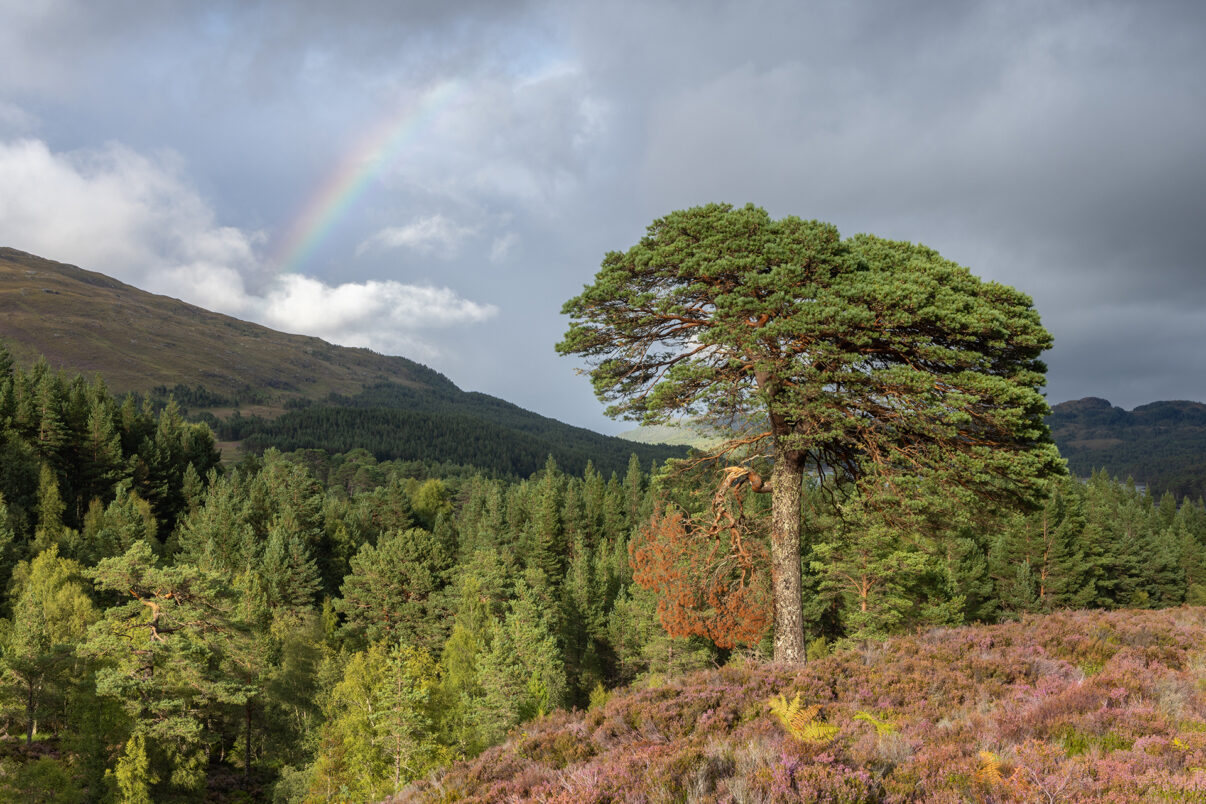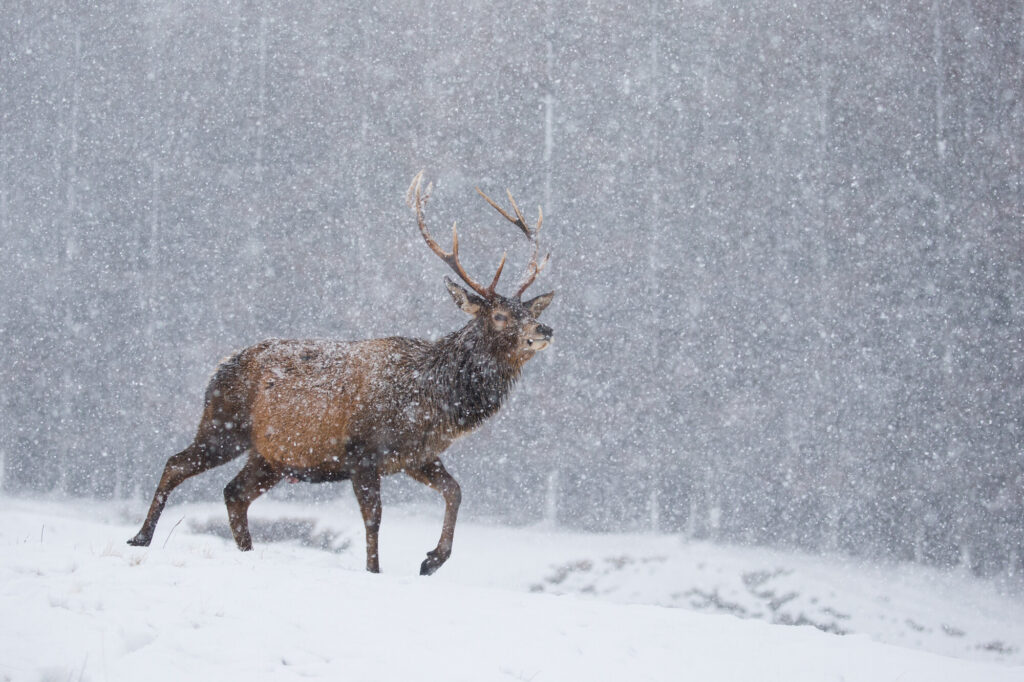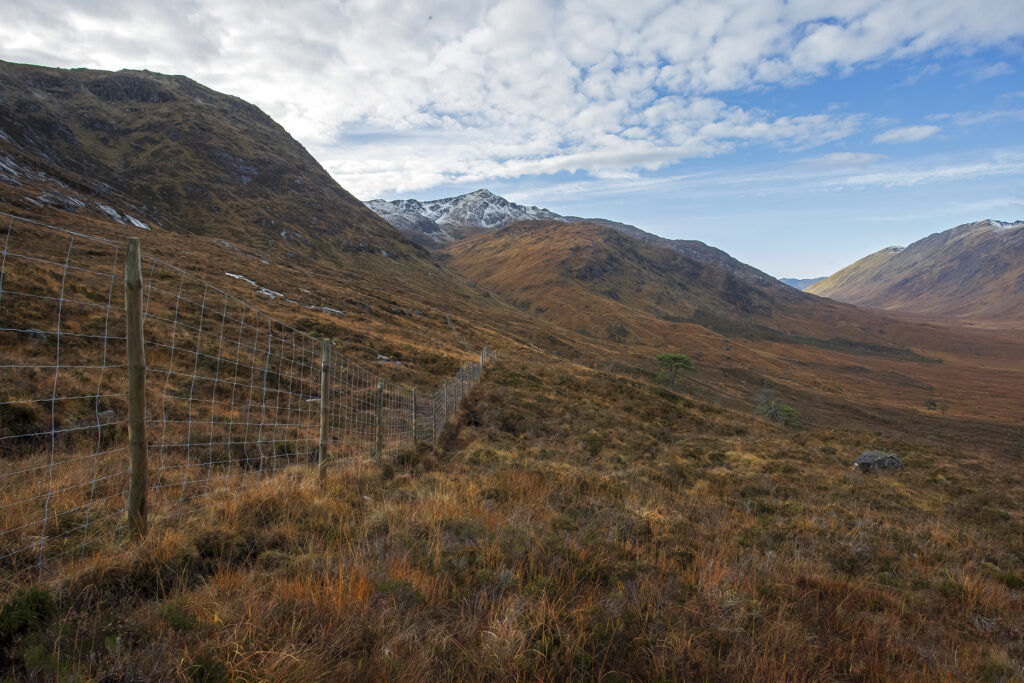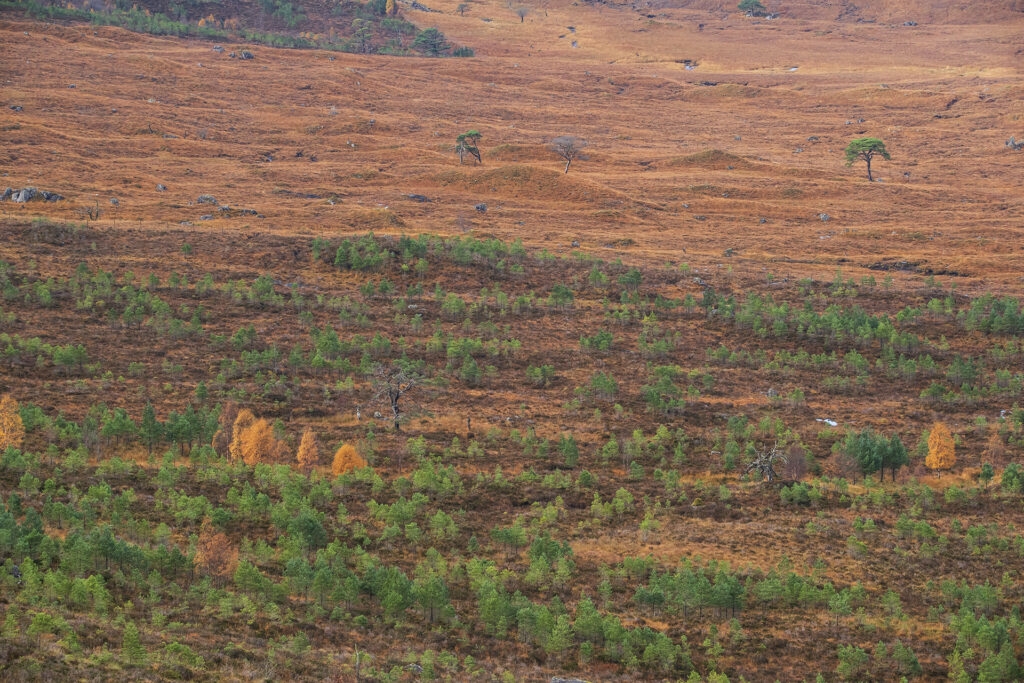The natural regeneration of forests offers wide-ranging benefits. In the Affric Highlands of Scotland, steps are being taken to enable the recovery of ancient Caledonian pinewoods.

Recovering a precious remnant
The regeneration of Scotland’s native pinewoods has taken a step forward with the protection of a forest remnant in Glen Loyne, located at the western end of the Affric Highlands rewilding landscape. Situated on the East Glenquoich Estate, the ancient woodland contains 57 pines, including Scotland’s oldest wild Scots pine, which is thought to be at least 565 years old. The ancestry of such pines stretches back to the last ice age, which ended about 10,000 years ago.
The Glen Loyne pines, which are scattered throughout the valley, are at risk from overgrazing by excessive numbers of deer, which prevents them from naturally regenerating. In cooperation with the landowner, whose love of the pinewoods has made the initiative possible, Trees for Life – Rewilding Europe’s partner in the Affric Highlands – has constructed a new, deer-proof fencing “exclosure” around the woodland. By keeping deer out, this will allow young seedlings to grow without being eaten – something that hasn’t happened for decades.


“Fencing is only a temporary fix, but for now it’s a vital way of giving these precious pinewoods a fighting chance of recovery until effective landscape-scale deer management can be properly established,” says James Rainey, senior ecologist at Trees for Life. “Glen Loyne’s wild pines and other Caledonian pinewoods are globally unique, and a special part of Scotland’s character and culture. Saving and restoring them is a major opportunity to enhance biodiversity and address climate change.”
Towards natural regeneration
Today, efforts to recover nature in the Affric Highlands rewilding landscape – which is located in the Central Highlands of Scotland – are primarily focused on woodland, peatland and riparian restoration. Much of the work carried out by the Affric Highlands rewilding team and Trees for Life has involved identifying wild trees that already exist in the landscape – fragments of the ancient Caledonian Forest, which once extended across most of Scotland.
As a result of widespread clearance, the planting of non-native tree species, and grazing pressure from unnaturally high deer populations, the Caledonian Forest now covers less than 20,000 hectares, but is still home to some of the UK’s most endangered wildlife, such as the capercaillie, red squirrel and Scottish wildcat. Many of the trees in remnant patches – which include Scots pine, juniper, birch, willow, rowan and aspen – have naturally evolved in the landscape over thousands of years.
While there is very little Caledonian Forest left, what does remain is incredibly valuable. Within the Affric Highlands rewilding landscape, the aim of the rewilding team is to ensure as many trees as possible are protected, so that natural regeneration can take place. This can enhance wildlife populations, enhance genetic diversity, and increase the resilience of trees to variables such as climate change. The natural regeneration of forests is also a far more effective way of locking up atmospheric carbon than putting new trees in the ground.

A wilder Affric Highlands that benefits all
Trees for Life surveyed Glen Loyne as part of its four-year Caledonian Pinewood Recovery Project, one of the most comprehensive surveys of the health of Scotland’s pinewoods.
Historically part of the royal hunting grounds of Cluanie, the Glen Loyne woodlands would once have been home to capercaillie, wildcat, and Eurasian lynx. Maps from 1874 show more extensive woodland in the glen, but by the 1990s there were only 85 ancient pines left – a number that has since dwindled to 57.
The Glen Loyne pinewood initiative has been funded by the family of Harry Steven, who with Jock Carlisle wrote “The Native Pinewoods of Scotland“, published in 1959. This pioneering book recognised the special status of the pinewoods, and documented 35 wild pine populations that had managed to survive centuries of deforestation. In the 1990s, the work of Steven and Carlisle led to the compilation of Scotland’s official Caledonian Pinewood Inventory, which today recognises 84 sites.
Led by Rewilding Europe and Trees for Life, the Affric Highlands is the UK’s largest rewilding landscape. The 30-year initiative will restore woodland, peatland, and riverside habitats over half a million acres – from Loch Ness to the west coast of Scotland. The recovery of nature will provide a range of benefits to local communities, including increasing economic opportunities that enable people to stay in and return to the area.
